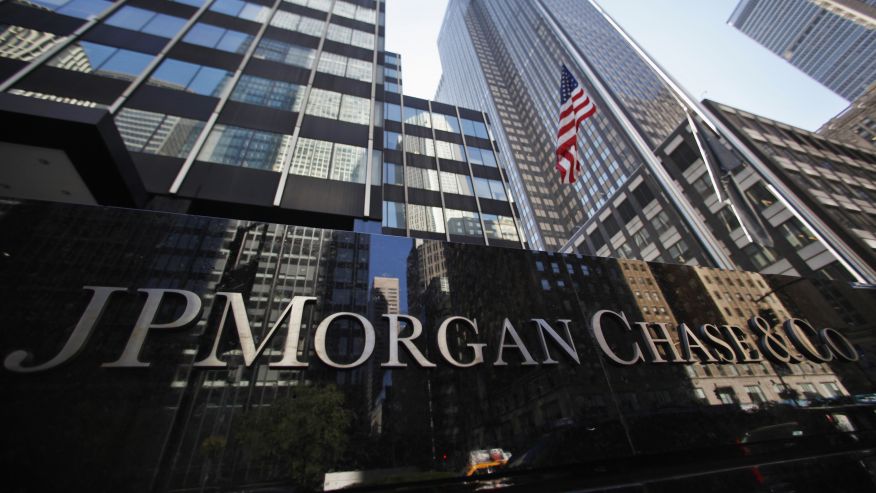At the May 21 launch of the JPMorgan Chase Institute, the banking company’s eponymous think tank, former British Prime Minister Tony Blair described the group’s inaugural report as a “revolutionary exercise” in the use of big data in economic policymaking.
The institute’s private financial data covers everything from debit card swipes to auto loans, drawn from 27 million of its own customers. The information is recognized as qualitatively richer and more timely than statistics compiled by government agencies like the Census Bureau and the Bureau of Labor Statistics.
The only problem is that we’re not allowed to see it.
While the institute’s report, replete with public policy recommendations and regulatory overtones, is accessible to anyone online, the numbers used for its conclusions are for JPMorgan’s eyes only.
Critics say the institute – a policy-influencing organization founded on the principle of exclusive access to its own banking statistics – is all but unprecedented. Unlike traditional think tanks, it is not a nonprofit legal entity but simply a division of the firm.
“This is a case of a company trying to improve its public profile,” said Mark A. Calabria, director of financial regulation studies at the Cato Institute, a libertarian think tank. He said “the element of lobbying might be the primary objective here.”
Ed Mierzwinski, consumer program director at the U.S. Public Interest Research Group, agreed: “In the end, I have no idea how a think tank inside a bank won’t be influenced by the bank,” he said.
Barry Bosworth, an economist at the Brookings Institution, said the use of private data to shape economic policy is disturbing.
“If the public doesn’t have access to the data upon which you’ve based your conclusions, then it has zero credibility in terms of public policy,” he said.
Steve O’Halloran, a JPMorgan spokesman, said the report’s conclusions were developed with the help of outside academic experts.
“This is about using our resources for the public good,” he said.
The group’s first report, “Weathering Volatility: Big Data on the Financial Ups and Downs of US Individuals,” stresses the “volatility” of its customers’ personal finances, drawing the business-friendly conclusion that “most individuals would benefit from innovative tools to better understand and manage their bottom line.”
“This sounds like code for the software business,” said Cato’s Calabria. “This veers very close to being a kind of marketing.”
In what critics say is an explicit nod to the retail banking industry, the 30-page report also recommends as potential solutions “insurance and credit products to help smooth income and spending.”
Similar research-oriented institutions tied to major corporations include the McKinsey Global Institute, formerly led by JPMorgan Chase Institute CEO Diana Farrell, and the Fannie Mae Foundation, which published two academic journals and was shut down in 2007 amid criticism that it advanced corporate interests rather than unbiased research.
The proprietary data used in the new JPMorgan Chase Institute study, though inaccessible to the public, contain information that government data, much of which comes from surveys, do not.
And while more traditional economic measurements, such as the consumer price index and the producer price index, analyze changes in the economy on a month-to-month basis, JPMorgan’s data can be continuously updated and refreshed in real time.
“We have transactional level detail,” said Fiona Greig, director of research for the institute. “It allows us to go down to the day, the hour, the minute.”
But a number of economists question whether such a level of detail has any relevance for economic policy, which functions on much longer time scales.
“It’s not a broad area of policy that you can address by saying, ‘My information is higher frequency and more immediate than yours’,” Brookings’ Bosworth said. “The public should be upset if the government is basing decisions on a moment-to-moment basis.”
Scope is not the only issue with JPMorgan’s data, from the perspective of the economic establishment. The limitations of the sample are also a problem.
“The real difference between what we do and what private data holders do is that we have access to information pertaining to the entire economy,” Bureau of Labor Statistics Commissioner Erica Groshen said. “When you use private data, you have access to one sector of people.”
While the institute says its data “touches 50 percent” of American households, it admits the way it interacts with that percentage isn’t clearly defined. For example, it doesn’t distinguish between spouses and other family members who may use accounts jointly.
“People use the term ‘big data’ like it’s something new,” Groshen said. “The truth is that we’ve been in this business a very long time.”
Still, the proponents of JPMorgan’s more-concentrated figures are eager to see their potential.
“I’ve never seen data like this,” Heather Boushey, an economist and senior fellow at the progressive Center for American Progress, said at the institute’s launch. “The proof will be in the pudding in terms of what researchers will do with it, but I’m excited to see where they go.”


